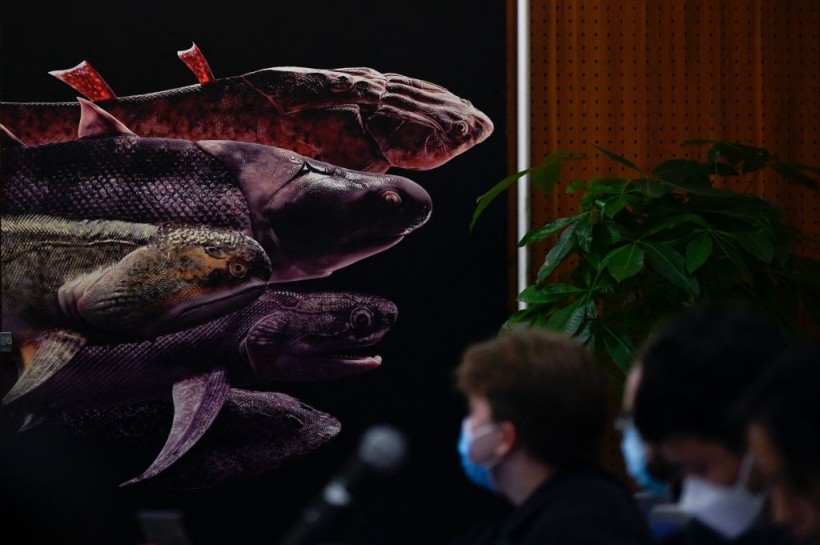A giant prehistoric fish that preyed on our human ancestors in an ancient supercontinent hundreds of million years ago was discovered in South Africa. The fossil site of the now-extinct fearsome predator was found under a road in a rural part of the country. Reports said the fossil was excavated on a roadside near Waterloo Farm, south of the town of Makhanda.
Our ancestors at this point in time are called tetrapods, a primitive ancestral group of four-legged animals consisting of semiaquatic creatures which will pave the way for the emergence of the human ancestry along the evolutionary line. With this, evidence shows that the giant ancient fish preyed on tetrapods, which some are believed by scientists to live both on water and land.
Now, researchers in South Africa confirmed the existence of the ancient monster with a fossil dating back to 360 million years ago. It belongs to a new fish species that once terrorized Earth's river waters in Gondwana long before the dinosaurs roamed and dominated the planet, according to a new study.
Giant Prehistoric Fish

Findings about the prehistoric predator was published in the journal PLOS ONE on February 22, wherein researchers described the largest bony fish during the Late Devonian period found near Waterloo Farm near Makhanda, formerly known as Grahamstown.
The ancient fish species called Hyneria udilezinye is a giant member of the extinct clade called Tristichopteridae and resembles Hyneria lindae from the late Famennian Catskill Formation in Pennsylvania, United States. The research team said the excavated fossil material is currently housed at the Albany Museum.
Also Read: Human Tooth Enamel Originated In Ancient Fish Scales, Researchers Say
Human Ancestor Predator
Study co-author Per Ahlberg, who is a professor at Uppsala University in Sweden, told Live Science the huge predatory fish had a size of 6.5 feet in length and looked like a modern alligator gar; the mouth is filled with rows of small teeth but also pairs of large fangs.
Ahlberg also postulated the giant fish possibly preyed on tetrapods, explaining that tristichopterids evolved into monsters that likely ate our ancestors, which will later on evolve into the predecessors of ancient humans.
While the discovery is unique, H. udlezinye is being compared to H. lindae which was found at an excavation site in Pennsylvania, which hundreds of millions of years ago belonged to the supercontinent Euramerica, just like Gondwana, during the Late Devonian.
What are Tetrapods?
According to the University of California, Berkeley, the word "tetrapod" literally means "four feet" and this animal group include all species alive today that have four feet. However, the group also consists of animals that do not have four feet, including humans.
This is because the group includes all organisms, both living and extinct, which descended from the last common or source ancestor of amphibians, mammals, and reptiles of today, the university explains.
In a nutshell, tetrapods evolved from a finned animal that lived in the water and some of its descendants evolved to live on land as well.
Related Article: World's Oldest Heart Found from an Ancient Jawed Fish Dating Back to 380 Million years Ago
© 2024 NatureWorldNews.com All rights reserved. Do not reproduce without permission.





